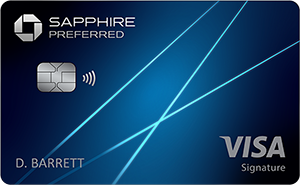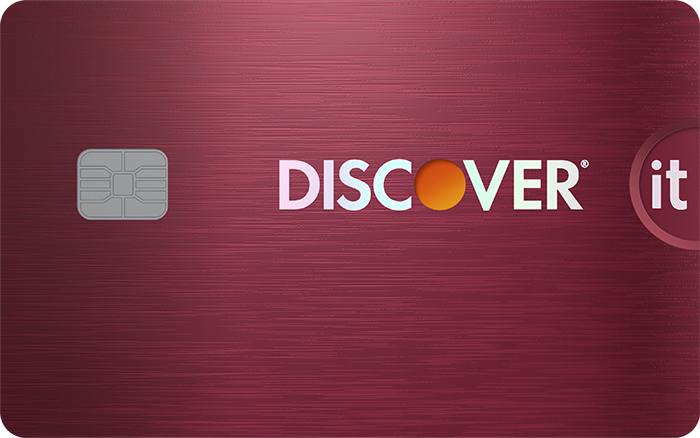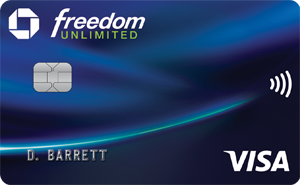One little-known fact about credit-scoring agencies (like FICO) is they don't care about how much debt you have in dollars. You could be $1 or $10,000 in debt and still boast a good credit score. That's because a FICO® Score measures only your credit utilization ratio.
Your credit utilization ratio is how much of your available credit you're using. Ideally, it's no more than 30%. Use too much credit, and you'll find yourself with a lower credit score. But you should use at least a little credit, enough to prove you can borrow responsibly.
It's actually super simple to calculate how much available credit you need. Read on for an easy formula and two ways to increase your credit limit.
How much available credit do you need?
To find out how much available credit you need, add up with how much credit you'd like to use each month. Multiply that number by 10. That's how much available credit you need in dollars.
Example: Say I'm a new credit user. I want to start my credit journey by spending only $100 each month with my secured credit card. 100 x 10 = 1,000. To keep my credit utilization at 10% and establish my credit, I should have at least $1,000 in available credit.
Unsure how much credit you want to spend monthly? If you're a credit card beginner, start small. If you're an experienced user, check the last 12 months of statements. How much are you typically spending? Multiply that number by 10 to get your ideal credit limit.
TIP
Try to avoid maxing out your credit card. Doing so could hurt your credit score. Plus, some lenders may see that as a black mark on your record and refuse to offer you low rates. If you're maxing out your card often, you could benefit from swiping less and raising your credit limit.
There are many factors that go into your credit score. For example, paying your bills on time is more important than your credit utilization ratio. But credit utilization is the second biggest factor that affects your credit score. You can boost your score by increasing your credit limits.
Two ways to increase your credit limits
If you find that you're using a lot more than 30% of your available credit regularly, consider increasing your credit limits. You can do this in one of two ways:
- Ask for a credit limit increase on your existing cards. You can typically request an increase through your online account. You may also contact your credit issuer by reaching out to a representative via phone or email. (Note: Some credit card companies will perform a hard credit inquiry while processing your request.)
- Open a new credit card account. The credit limit of the new account will be added to your total available credit. Opening a new credit account will probably lower your credit score in the short term, because doing so lowers the average age of your accounts.
Boosting your credit limits will shrink your utilization rate, which is good for your credit score. However, that's only true if your spending remains constant. If you spend more, your utilization rate will get worse no matter what your credit limits are.
Credit card comparison
We recommend comparing options to ensure the card you're selecting is the best fit for you. To make your search easier, here's a short list of standout credit cards.
| Offer | Our Rating | Welcome Offer | Rewards Program | APR | Learn More |
|---|---|---|---|---|---|
|
Rating image, 5.00 out of 5 stars.
5.00/5
Our ratings are based on a 5 star scale.
5 stars equals Best.
4 stars equals Excellent.
3 stars equals Good.
2 stars equals Fair.
1 star equals Poor.
We want your money to work harder for you. Which is why our ratings are biased toward offers that deliver versatility while cutting out-of-pocket costs.
|
Discover will match all the cash back you’ve earned at the end of your first year. N/A | 1% - 5% Cashback Earn 5% cash back on everyday purchases at different places you shop each quarter like grocery stores, restaurants, gas stations, and more, up to the quarterly maximum when you activate. Plus, earn unlimited 1% cash back on all other purchases—automatically. |
Intro: Purchases: 0%, 15 months Balance Transfers: 0%, 15 months Regular: 17.24% - 28.24% Variable APR |
||
|
Rating image, 5.00 out of 5 stars.
5.00/5
Our ratings are based on a 5 star scale.
5 stars equals Best.
4 stars equals Excellent.
3 stars equals Good.
2 stars equals Fair.
1 star equals Poor.
We want your money to work harder for you. Which is why our ratings are biased toward offers that deliver versatility while cutting out-of-pocket costs.
|
Up to $300 cash back Earn an extra 1.5% on everything you buy (on up to $20,000 spent in the first year) — worth up to $300 cash back. That's 6.5% on travel purchased through Chase Travel, 4.5% on dining and drugstores, and 3% on all other purchases. | 1.5% - 5% cash back Enjoy 5% cash back on travel purchased through Chase Travel, our premier rewards program that lets you redeem rewards for cash back, travel, gift cards and more; 3% cash back on drugstore purchases and dining at restaurants, including takeout and eligible delivery service, and 1.5% on all other purchases |
Intro: 0% Intro APR on Purchases and Balance Transfers for 15 months Purchases: 0% Intro APR on Purchases, 15 months Balance Transfers: 0% Intro APR on Balance Transfers, 15 months Regular: 20.49% - 29.24% Variable |
Apply Now for Chase Freedom Unlimited®
On Chase's Secure Website. |
|

Apply Now for Chase Sapphire Preferred® Card
On Chase's Secure Website. |
Rating image, 4.50 out of 5 stars.
4.50/5
Our ratings are based on a 5 star scale.
5 stars equals Best.
4 stars equals Excellent.
3 stars equals Good.
2 stars equals Fair.
1 star equals Poor.
We want your money to work harder for you. Which is why our ratings are biased toward offers that deliver versatility while cutting out-of-pocket costs.
|
60,000 bonus points Earn 60,000 bonus points after you spend $4,000 on purchases in the first 3 months from account opening. That's $750 when you redeem through Chase Travel℠. | 5x on travel purchased through Chase Travel℠, 3x on dining and 2x on all other travel purchases Enjoy benefits such as 5x on travel purchased through Chase Travel℠, 3x on dining, select streaming services and online groceries, 2x on all other travel purchases, 1x on all other purchases, $50 Annual Chase Travel Hotel Credit, plus more. |
Intro: N/A Purchases: N/A Balance Transfers: N/A Regular: 21.49%-28.49% Variable |
Apply Now for Chase Sapphire Preferred® Card
On Chase's Secure Website. |
One easy way to keep your utilization rate down
Let's say you're planning to borrow a large amount of money soon. Maybe you're taking out a mortgage, or maybe you're getting an auto loan to pay for a used car. Whatever the case, you want your credit score in top condition to get the best rates possible and pay less money.
To keep your utilization rate down -- therefore boosting your credit score -- you can pay off your credit card balance in small chunks throughout the month. That way, you will never be at risk of having your lender report to credit bureaus that your credit utilization is too high.
Example: You have a $2,000 credit card limit and usually spend $1,000 a month. This shows as using 50% of your credit, which can lower your credit score. To improve this, you start paying off the card every time you owe $250. Now, the most you owe at any time is $250, making your credit usage only 12.5%. This is great for your credit score.
Can your credit limit be too high?
Yes, if it tempts you to overspend by maxing out your card. In that case, try tracking your spending with a budgeting app. That way, you know exactly how much that last-minute purchase at your favorite store is costing you. Measuring harmful habits is the first step to changing them; once you know, you can plan.
So long as it doesn't change your spending habits too much, having a high credit limit is good for your finances. It makes it easier to spend more on credit, earn credit card rewards, and maintain a high credit score. For best results, keep credit utilization in the 5% to 10% range.
Related reads
FAQs
-
Having $20,000 in available credit is good if you use no more than $6,000 of that limit. It's best to keep your usage to $2,000 or less at any one time. That way, you keep your credit utilization ratio below 10%, which is great for your credit score.
-
Only if you repeatedly request credit limit increases. Lenders may perform hard credit inquiries while processing your requests, which typically lower your credit score.
Our Credit Cards Experts
We're firm believers in the Golden Rule, which is why editorial opinions are ours alone and have not been previously reviewed, approved, or endorsed by included advertisers. The Ascent does not cover all offers on the market. Editorial content from The Ascent is separate from The Motley Fool editorial content and is created by a different analyst team.

